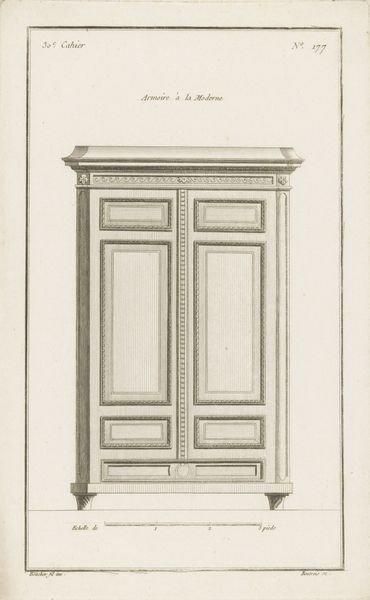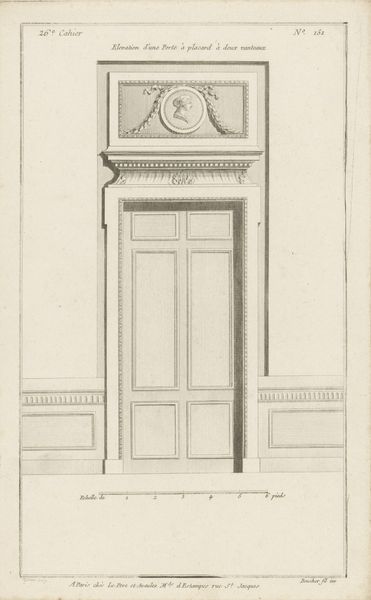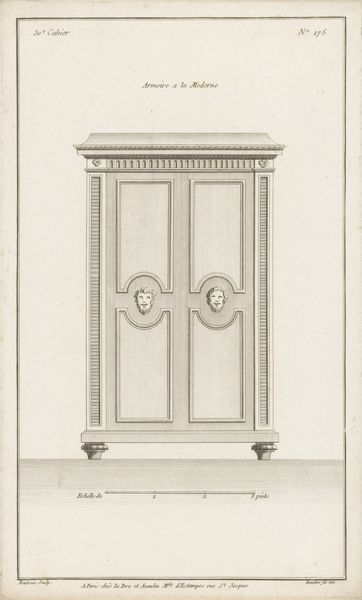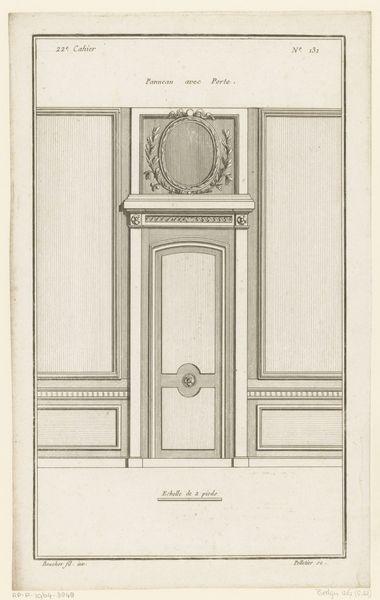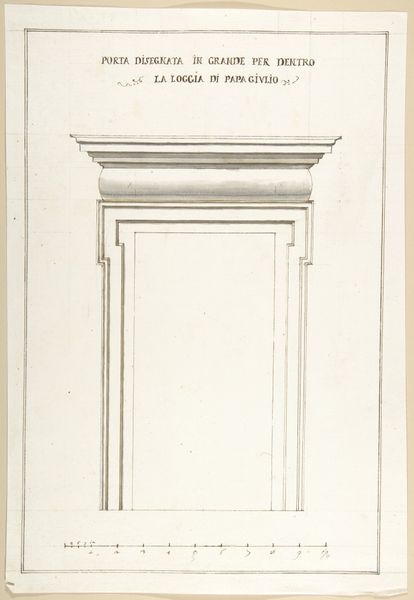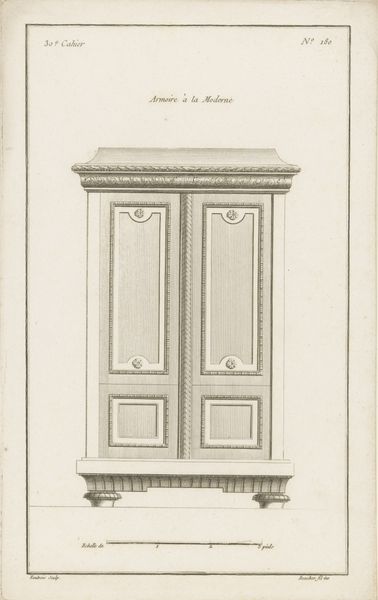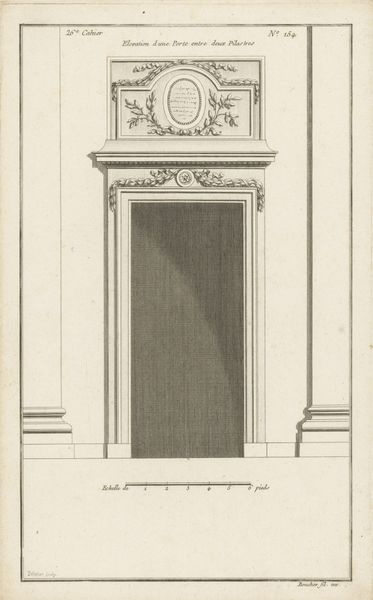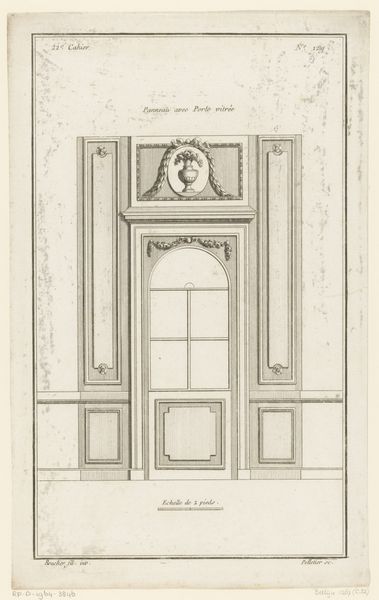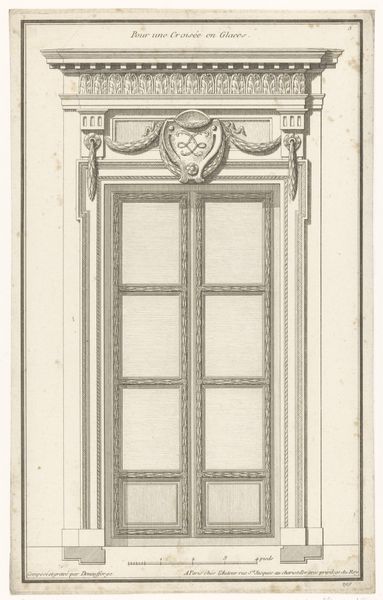
drawing, print, engraving, architecture
#
drawing
#
neoclacissism
# print
#
line
#
engraving
#
architecture
Dimensions: height 329 mm, width 203 mm
Copyright: Rijks Museum: Open Domain
Curator: Immediately striking, isn't it? Such crisp linearity! Editor: Yes, it's exceedingly orderly, almost severe. An air of restrained elegance. Curator: Indeed. What we have here is "Door with garlands," or "Deur met guirlandes," dating from 1772 to 1779, attributed to Jean Pelletier. It's currently held here at the Rijksmuseum. This piece combines drawing and printmaking, specifically line engraving. An architectural study, if you will. Editor: The contrast is stark. The garlands soften the rigidity slightly, providing a visual counterpoint. The meticulousness of the engraving technique is certainly on display here, emphasizing a clear, almost clinical precision. But what was its function? Curator: Precisely! It functions as part of a visual language associated with neoclassicism and speaks volumes about the design sensibilities during the late 18th century. These prints of architectural elements would circulate among designers and wealthy patrons. They essentially democratized the diffusion of design. This image also reveals an aspiration towards balance, harmony, and order, traits associated with Enlightenment ideals. Editor: So, beyond pure aesthetics, there’s an implication of social status and access to this type of elevated taste. It hints at a culture where design was becoming increasingly formalized and available to a wider, if still elite, audience. It wasn't just about making beautiful things but projecting an image, creating a social identity. Curator: Very astute. Note, too, how the emptiness surrounding the door contributes to its impact; the unadorned space amplifies its significance. The door is not merely an object; it's a symbol of transition, a passage to something – or perhaps, nothing. Editor: It is compelling, and initially uninviting, though seeing this artwork I understand better now the door's place as both portal and signifier of privilege. It underscores how artistic forms can shape—and are shaped by—social forces. Curator: Yes, that is very insightful, even for a Historian! The restrained visual presentation makes us think more deeply about that which is represented.
Comments
No comments
Be the first to comment and join the conversation on the ultimate creative platform.

